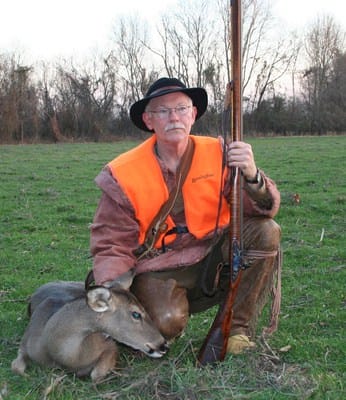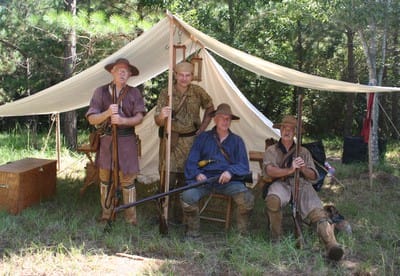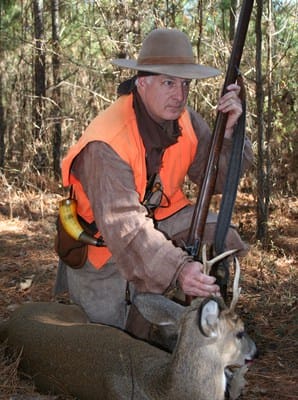
The buck took me by surprise. I knew he was there having seen him on several other occasions. But this morning I was taken aback.
Before daylight I had eased into a collection of huge hardwoods along the Mississippi River. Acorns were abundant, and as I climbed into a ladder stand and hooked up the safety harness, I figured it would be only a short time before I saw deer. I was correct. A steady parade began trickling by as whitetails left grain fields and worked their way back into the timber. Before an hour had passed, 32 deer had come by at varying distances, but none of the bucks met this area’s size minimum (8 points).

After movement slowed, I crawled from the stand, stowed the safety rig, and began tipping about the hardwoods, the wind in my face. I would maneuver to a big oak, sit and watch, and then move to another, always scanning ahead as far as I could from each new station. But when the buck came I was between big trees, with only a 6-inch sapling a few feet ahead. Like a ghost, he was there, his mature body glistening in the sunlight and his impressive rack swaying with every step.
My heart began to race. Dressed in 18thCentury garb and standing in fairly open woods, I feared there would be no chance of going undetected. I chanced two more quiet steps that put me near the sapling, my only cover and rifle rest. That accomplished, I laid the big flintlock against that sapling and waited.
When he was perhaps 60 yards out, the buck froze, looked in my direction, and went on full alert. The time had come. I settled the bead hard behind his left shoulder and touched the trigger. There was that familiarclack, whoosh, boom, and the deer disappeared behind a cloud of blue-grey putrid smoke that clung to the humid air.

I immediately began a hasty reload, but when the smoke drifted away, I realized that was not required. The buck lay where he had been standing when the round ball struck. It was all surreal and magical and intriguing.
The flintlock firing system is ancient. It was the first major improvement and progressive step from the matchlock and wheel lock systems that had been in use since firearms had been developed, and it was the system that took shooters into the 19th Century. Replaced by the caplock, the flint method served well for generations, and it still works today.
The flintlock firing system uses a piece of flint held in the jaws of a #### (hammer). When the flint falls it strikes a frizzen which covers a pan loaded with a tiny charge of fine black powder. The spark ignites the priming powder, and this sends a hot flame through a touch hole to set off the charge in the barrel. The shooter has to follow through and not flinch with all the fuss going on in the pan at his or her face, but the system is still fast and reliable.
When choosing a flintlock for big game, the proper approach is to select a big caliber. For deer, that selection begins with .50 caliber and the .54 is even better. Round balls shed velocity quickly and are not terribly efficient, so big is better. And for reliable ignition, keep the touch hole picked and open, cover the lock and frizzen with a cow’s knee (a piece of oiled leather that protects the priming powder), and change the powder in the pan regularly—every 20 minutes or so if humidity is high.
And for an added thrill when hunting with the flintlock, dress in period-specific clothes—buckskin leggings, moccasins, a knee-length hunting shirt, and perhaps a wool weskit or hunter’s frock. Yes, the flintlock will shoot for the camoed hunter, but the old clothes add an additional measure of nostalgia. Flintlocks are not for every one. They demand discipline and constant care, but they are incredibly addictive. The shooter who masters them will find himself or herself going back for more year after year. Flinters are simply too good to miss.



